In 2008, HeinOnline launched ScholarCheck, our first home-grown citation tool, to provide the most-cited journals, articles, and authors to aid researchers in quickly locating authoritative material in the database. Now, researchers can take an extra step and analyze scholarly content outside of HeinOnline with our integration with Altmetric. Altmetric follows online attention across news outlets, websites, blogs, social media, and more, tracking thousands of online conversations to uncover the societal impact of scholarly works. Watch this short video or keep reading to learn more.
Altmetric in HeinOnline
In HeinOnline, an Altmetric donut badge will only appear if an article includes a Digital Object Identifier, also known as a DOI, and at least 1 metric from an outside online source. The outside sources include:

- Public policy documents
- Online reference managers
- Social media (Facebook, X, Google+, etc.)
- Wikipedia
- Citations
- Mainstream media
- Post-publication peer-review platforms
- Patents (data from IDI Claims)
- Academic and non-academic blogs
- Research highlights
- Multimedia and other online platforms (YouTube, Reddit, etc.)
These badges are updated daily. So how does this integration work? Selecting the donut badge brings users to the Altmetric Attention Score page for that article. The summary tab contains general information regarding the article. It also contains a visual representation of the location of users from X, formerly known as Twitter, and Mendeley readers who are sharing the output.
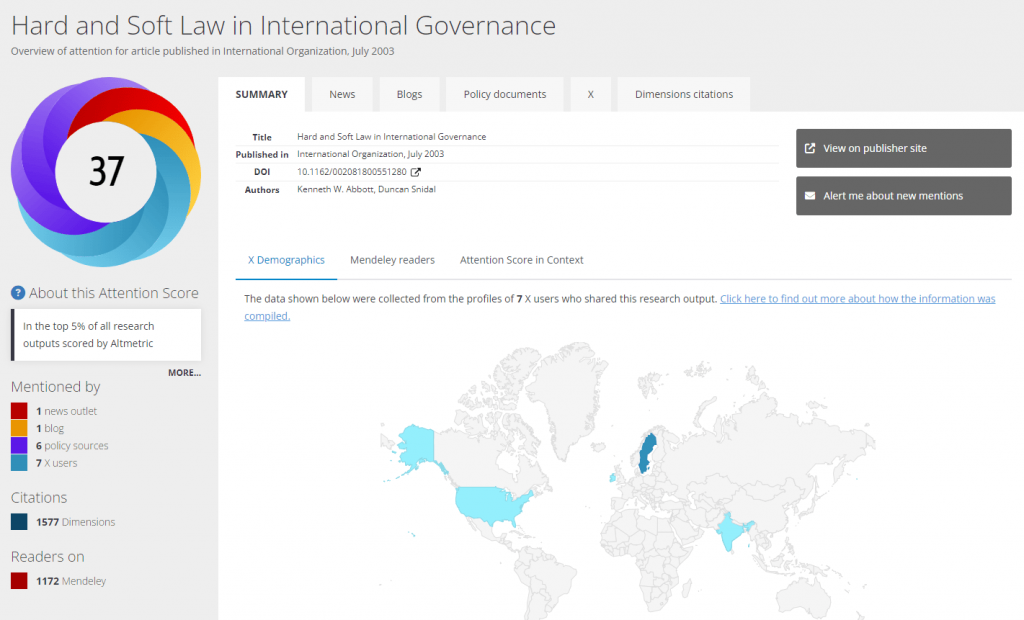
The Altmetric Attention Score for a research output indicates the amount of attention it has received.
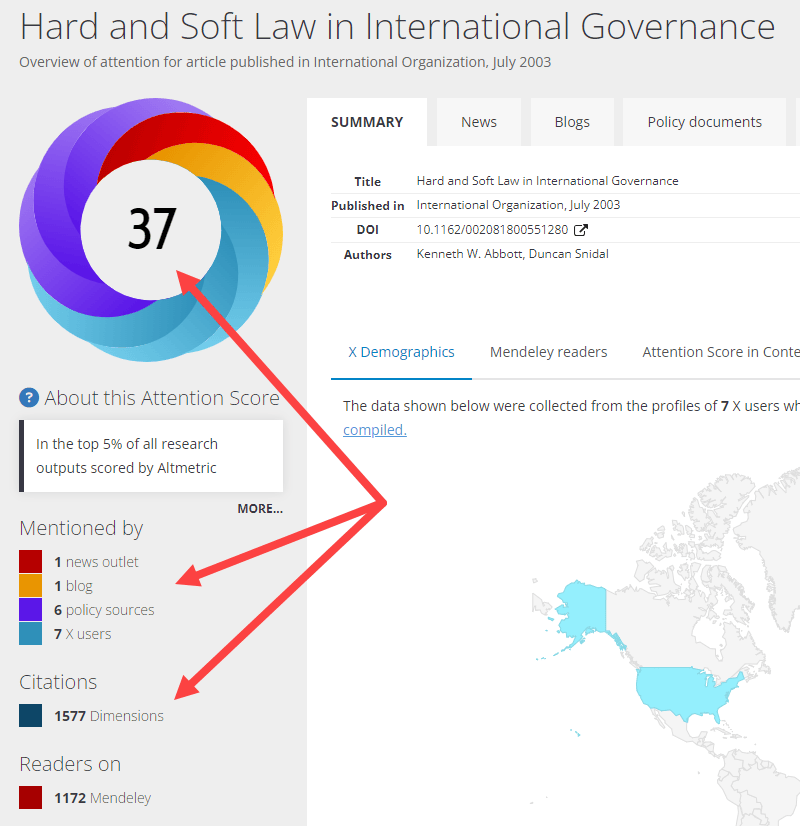
How Is the Altmetric Score Calculated?
The Altmetric Attention Score is an automatically calculated, weighted count of all of the attention a research output has received. It is based on 3 main factors:

Volume
The score for an article rises as more people mention it. We only count one mention from each person per source, so if you tweet about the same paper more than once, Altmetric will ignore everything but the first.

Sources
Each category of mention contributes a different base amount to the final score. For example, a newspaper article contributes more than a blog post, which contributes more than a tweet.

Authors
Altmetric looks at how often the author of each mention talks about scholarly articles, whether or not there’s any bias towards a particular journal or publisher, and who the audience is.
The Altmetric donut colors show you where the conversations are happening. In this example, you can see most of the conversation for this piece is occurring on X, as indicated by the blue color. The colors of the Altmetric donut each represent a different source of attention:
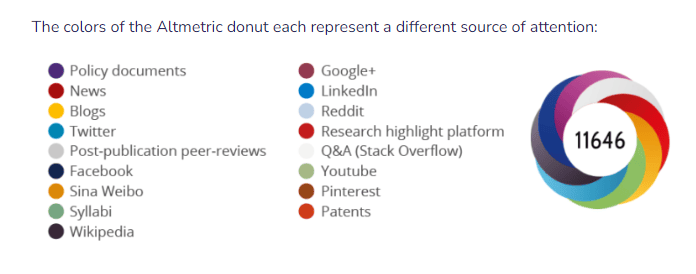
Tab through the various outlets to be directly linked to each reference.
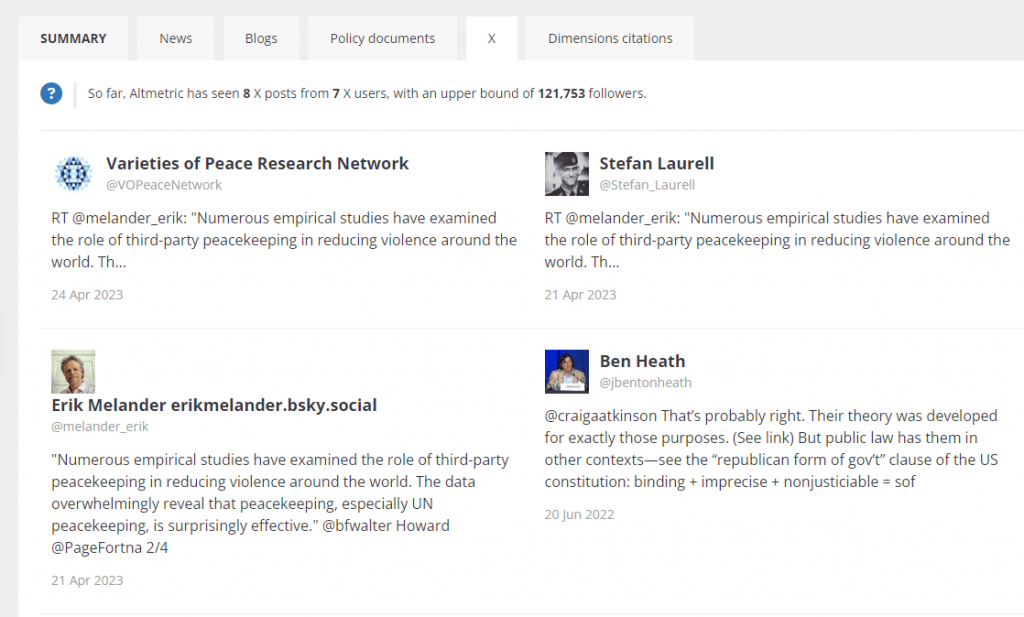
What’s more, researchers can set up email alerts to tell them when an article has been mentioned. This allows researchers and authors to track ongoing attention associated with an article.

These badges can be found in four different places in HeinOnline.
1. Search Results
Within a search results page, users will see the Altmetric badge located to the right of the document, next to the ScholarCheck metrics.
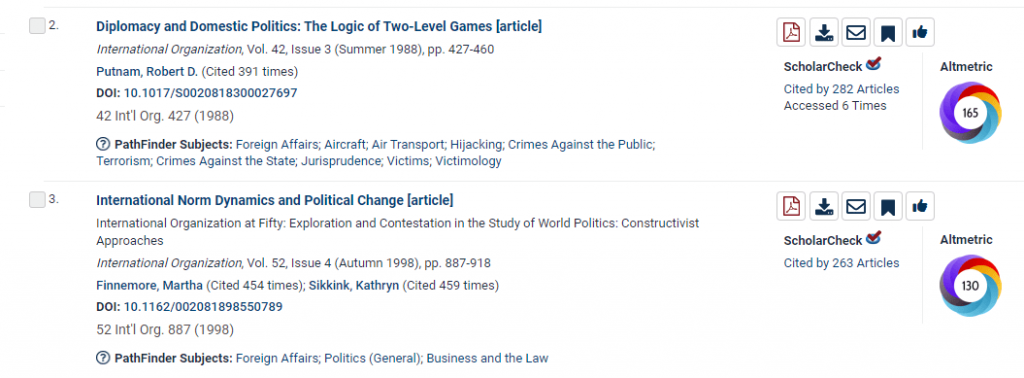
2. Author Profile Pages
The Altmetric badge can be found on Author Profile Pages in HeinOnline. Similar to search results, the donut badge will be listed next to the ScholarCheck metrics of the author’s listed works.

3. Viewing an Article
When viewing an article in HeinOnline, an Altmetric badge will display next to the ScholarCheck metrics above the table of contents.
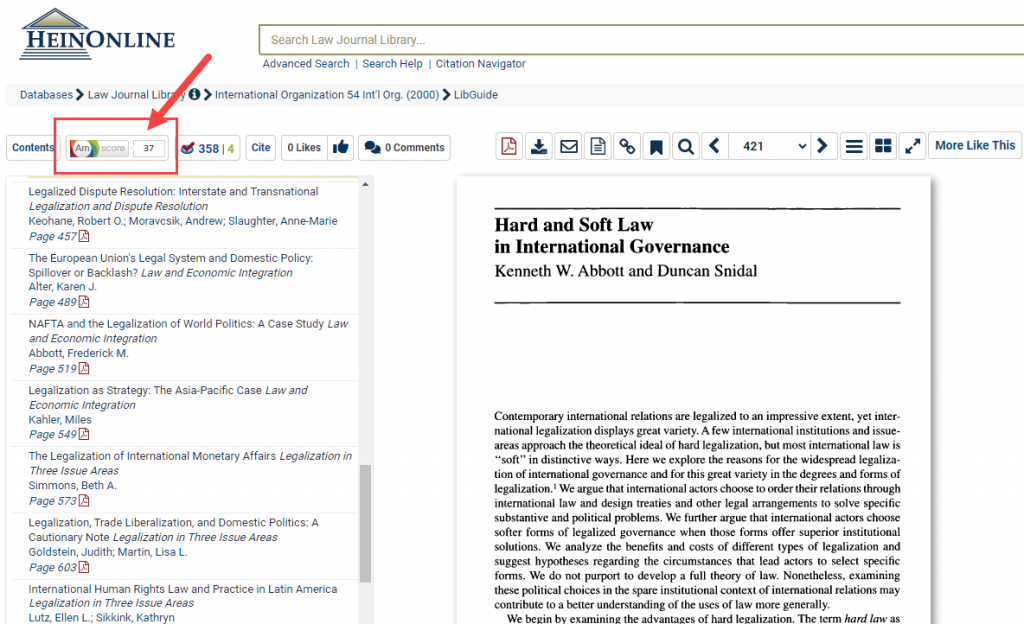
4. MyHein
If a user saves an article that contains an Altmetric badge to their MyHein account, the badge will be displayed there as well.

More About Altmetric
Altmetric is part of Digital Science, an AI-focused technology company that tracks where published research is mentioned online. Altmetrics are a simple and effective way of understanding who is engaging with research online and what they’re saying. The Altmetric data gathered allows users to track anything from articles to software packages, using a broad range of scholarly identifiers that cut out the noise of traditional measurement tools.
Need Help? Contact Us.
Our HeinOnline Support team is available to guide you through this new feature or any other questions you may have. Contact us or browse our help resources below.



